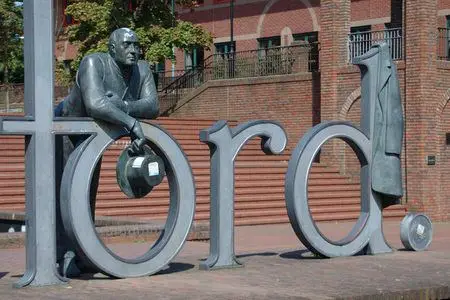Ironbridge and the Industrial Revolution FEATURE
Feature article by BritEvents.
Comments
Share this feature
Previous: History and Beauty of Ironbridge
The birth of the Industrial Revolution is believed by many to have taken place in the picturesque Ironbridge Gorge, on the banks of the River Severn in Shropshire, England.

The birth of the Industrial Revolution is believed by many to have taken place in the picturesque Ironbridge Gorge, on the banks of the River Severn in Shropshire, England. In his ironworks in nearby Coalbrookdale, in the year 1709, Abraham Darby exchanged coke for charcoal, in the production of iron for making pots, pans, kettles and the like. Darby's Coalbrookdale foundries prospered and diversified. Seventy years later, in 1779, his grandson, Abraham Darby III, built the first iron bridge in the world across the Severn, so the town became Ironbridge.
The iron bridge attracted attention worldwide and was to become a symbol of the Industrial Revolution that was based on the availability of coal reserves beneath England together with the enthusiasm and ingenuity of the engineers of the day. They produced machines that revolutionised the production of textiles and built roads, canals and a network of railways, engines and rolling stock. Over the next century and beyond, this revolution spread from the UK into Europe and around the world.
One of the most famous engineers of the time who was influenced by the iron bridge was Thomas Telford. Born in Scotland in 1757, he trained as a stonemason, wanted to be an architect, but in 1820 was to become a celebrated first President of the Institution of Civil Engineers. During a lengthy stint as Surveyor of Public Works for the county of Shropshire, he became familiar with Ironbridge, and built some iron bridges himself. He is also known for building canals and his projects in London include the St Katherine Docks beside Tower Bridge. He died in 1834 and 134 years later, in 1968, he was commemorated by the naming of a new town in Shropshire: Telford.
Today Ironbridge is a shrine to the Industrial Revolution, with many museums dedicated to its history and the industries that were followed there. The main ones are:
• Iron Bridge Museum in the Tollhouse at its southern end
• Coalbrookdale Museum of Iron on the site of the Darby family's iron foundries
• the Darby Houses where members of the Darby family made their homes
• Museum of the Gorge on the banks of the Severn at Ironbridge
• Blists Hill Victorian Town, recreating a way of life
• Enginuity, for innovative interactive exhibits that are great fun for the whole family
• Jackfield Tile Museum, for the history of the UK ceramic tile industry
• Tar Tunnels, for an exciting underground adventure
• Coalport China Museum, all about ceramics
• Brosely Pipeworks, which was the last traditional pipe-maker to close down in the UK in 1957
See the list of visitor attractions below this feature for more information.
The costs of entry can add up, so if your visit to Ironbridge is long enough to allow you to visit several museums, or you can return a number of times, it's worth buying a Family Passport ticket. This gives entrance to these ten museums for up to two adults and three children for a full year.
In 1986, Ironbridge became a World Heritage Site, a fitting accolade for a small area that contributed so much to the world changes brought by the Industrial Revolution.

 Popular
Popular Recent
Recent Comments
Comments



















 Jeff Dunham: Seriously!? Comedy Icon Announces UK Arena Tour for 2020
Jeff Dunham: Seriously!? Comedy Icon Announces UK Arena Tour for 2020
 odome set to revolutionise event marketing
odome set to revolutionise event marketing
 Edinburgh Cocktail Week
Edinburgh Cocktail Week
 Calvin Harris new album 18 Months
Calvin Harris new album 18 Months






